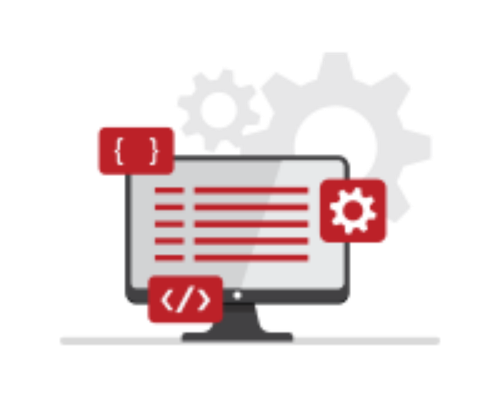Wondering how you can master the basics of Moodle and drive learner success? We’ve got you covered with this blog post - you’ll have the quick-fire steps to set yourself (and your learners!) up for success. We'll walk you through the basics of Moodle, offering insights and practical tips to help you feel confident in your role as an administrator. Let's get started.
Understanding the Moodle basics
What is Moodle?
Moodle is a Learning Management System designed to support educators, administrators, and learners. Due to its open-source nature, it’s a flexible, secure, and customisable online learning platform. The current version of Moodle LMS Is Moodle 4.3. You can learn more about the latest version in this video by Moodle.
User Roles in Moodle
Moodle operates on a role-based system, where users are assigned specific roles determining their level of access and responsibilities. Here are the key roles you'll encounter:
- Administrator: The top-tier role with full control over the Moodle site.
- Teacher/Instructor: Manages courses, creates content, and assesses student performance.
- Student/Learner: Enrols in courses, participates in activities, and accesses learning resources.
Administrator Moodle basics
Installation process
Moodle's installation process might vary based on your hosting environment. In our previous blog post, we covered 10 tips to host your Moodle LMS well. But, if you're new to this, consider seeking assistance from your IT department or a Moodle expert. Otherwise, follow these general steps to install Moodle:
- Download Moodle: The latest version of Moodle is on the official website.
- Upload files: Transfer the Moodle files to your server using FTP or a file manager.
- Database configuration: Create a new database and configure Moodle to connect to it.
- Web installation: Visit your Moodle site in a web browser, and the installation wizard will guide you through the process.
If you’re installing Moodle to support a large learner base, or migrating from an existing LMS, we highly recommend working with a trusted partner for seamless implementation. Catalyst is a Global Moodle certified partner that has supported some of the largest tertiary institutes worldwide.
Check out some of our Moodle case studies to see how we could help you too.

Initial configuration
After installation, it's time to set up your Moodle site. Here are a couple of important configurations:
- Site details: Navigate to Site Administration > Site Details to set your site's name, description, and time zone.
- Authentication: Choose your preferred authentication method under Site Administration > Plugins > Authentication.
- Enrolment methods: Determine how users will be enrolled in courses under Site Administration > Courses > Enrolment Methods.
- Default front page: Set the default front page layout under Site Administration > Front Page > Front Page Settings.
User management: adding and enrolling users
User creation
As an administrator, you have the authority to add and manage users. Here's how you can add a new user:
- Navigate to Site Administration > Users > Accounts > Add a New User.
- Fill in the details: Provide essential information such as username, password, and email.
- Assign role: Select the appropriate role for the user (e.g., student, teacher, etc.).
- Click "Create My New Account" to finalize.
Enrolling users in courses
Once users are added, you'll need to enrol them in courses. Here's a straightforward guide:
- Go to Site Administration > Courses > Manage Courses and Categories.
- Select the course: Click on the course you want to manage.
- Enrol users: Under Course Administration, select "Users" and then "Enrolled Users."
- Add users: Use the "Enrol Users" button to add users to the course.
Course creation and management
Creating a course
Creating a course in Moodle is a fundamental task. Here's a step-by-step approach:
- Navigate to Site Administration > Courses > Manage Courses and Categories.
- Choose a category: Click on the category where you want your course to reside.
- Click "New Course" and fill in the details: Add the course name, description, and other essential information.
- Save and display: Choose whether to save and return or save and display your new course.
For a more in-depth look at how to create a new course, or upload an existing course check this out.
Adding content to courses
Your LMS course content can be the difference between an engaged or distracted learner. You can check your learner course engagement by installing the course dedication Moodle plugin.
It’s important to have just the right amount of content, at the right time, for the right learner. If you’re new to content creation, we recommend teaming up with a Learning Designer for support.
However, if you’re ready to go, once your course is created, it's time to populate it with engaging content. Here are a few activities to factor in:
- Navigate to your course: Click on your course to enter the course view.
- Turn editing on: Click the "Turn editing on" button to reveal editing options.
- Add resources and activities: Use the "+" icons to add resources like documents or activities like assignments and quizzes.
Communication and collaboration: forums and messaging
Forums
Forums are a powerful tool for fostering communication and collaboration. Here's how to set up a forum:
- Navigate to the course where you want to add a forum.
- Turn editing on: Click the "Turn editing on" button.
- Add an activity or resource: Use the "+" icons to add a new forum.
- Configure forum settings: Set the forum type, subscription options, and display preferences.
Messaging and notifications
Moodle allows users to communicate through messaging and receive notifications. Here's a brief guide:
- Access your profile: Click on your profile picture to access your profile.
- Messaging settings: Navigate to "Preferences" and then "Messaging" to customise your messaging preferences.
- Notification preferences: Under "Notification preferences," users can set how they want to be notified about various activities.
Moodle basics: security
Enabling MFA
If you’re using Moodle 4.3, you’ll be pleased to hear Moodle built our Catalyst MFA plugin as standard. However, if you are using an earlier version of Moodle, you should install the MFA plugin for extra security.
- Navigate to Site Administration > Security > Multi-Factor Authentication.
- Choose an MFA plugin: Select a suitable MFA plugin from the available options. The Catalyst MFA plugin can be found at this link.
- Configure MFA settings: Follow the plugin-specific instructions to configure MFA settings.
Backup Moodle
If and when things go wrong, having a backup of your Moodle data can alleviate major issues.
You can read more about how to secure your self-hosted Moodle in this blog post. Additionally, you can use the All Backups plugin for secure Moodle recovery.
Maintaining Moodle

Content and course maintenance
If your learners struggle to complete courses, it might indicate disengagement with your LMS content. This can be due to outdated, irrelevant, or improperly presented material. To tackle this, follow these five tips for effective LMS content management:
- Know the lifecycle: Regularly review and update course content, ensuring it's relevant and accurate. Keep track of different course versions completed by learners for regulatory compliance.
- Improve content quality: Utilise in-house expertise or partner with an LMS expert to improve your content for online learning.
- Address SCORM issues: Identify and resolve SCORM-related challenges, such as "SCORM rot." Evaluate the impact on learners and update or replace SCORM content accordingly.
- Update SCORM content: Combat SCORM rot by republishing old content with tools like H5P, replacing outdated files, or seeking support from an LMS partner.
- Enhance engagement with built-in functionality: Moodle’s built-in content creation functionality is built on modern authoring tools like H5P. This enables easier updates, flexibility, and improved engagement. H5P offers native mobile support, responsive design, and built-in editing tools. The bottom line is to avoid creating new SCORM at all costs.
Continuous integration as a Service (CIaaS)
CIaaS automates testing, enhances collaboration, and ensures quick, reliable updates. Integrate it easily, choosing platforms like Jenkins or GitLab. Elevate your Moodle site's efficiency, security, and user experience effortlessly with CIaaS. Catalyst is the only provider offering CiaaS.
Troubleshooting tips
Common issues and solutions
Troubleshooting issues will need to be completed as they arise. Here are some common problems and how to address them:
- Plugin compatibility: Ensure your plugins are compatible with your Moodle version. This article shows you how to find out which Moodle version you are currently using.
- Theme issues: Test themes for compatibility and switch to a default theme if needed. Learn how to switch to standard Moodle themes with this guidance.
- Server configuration: Verify that your server meets Moodle's requirements. This article shows you the Moodle basics of requirements.
Conclusion
Congratulations - you've just scratched the surface of Moodle administration. Remember, Moodle is a supportive platform with a supportive community. So don't hesitate to explore, experiment, and seek help when needed.
If you need Moodle support, you’re in the right place. Catalyst is one of the biggest contributors to the Moodle project globally, and the largest in Australasia behind Moodle HQ. We’ve won multiple awards for our Moodle work, plus we work with some of the largest tertiary institutions globally. Our full-service wrapper means we can support you with design, development, delivery, hosting, content creation, security, and everything in between.